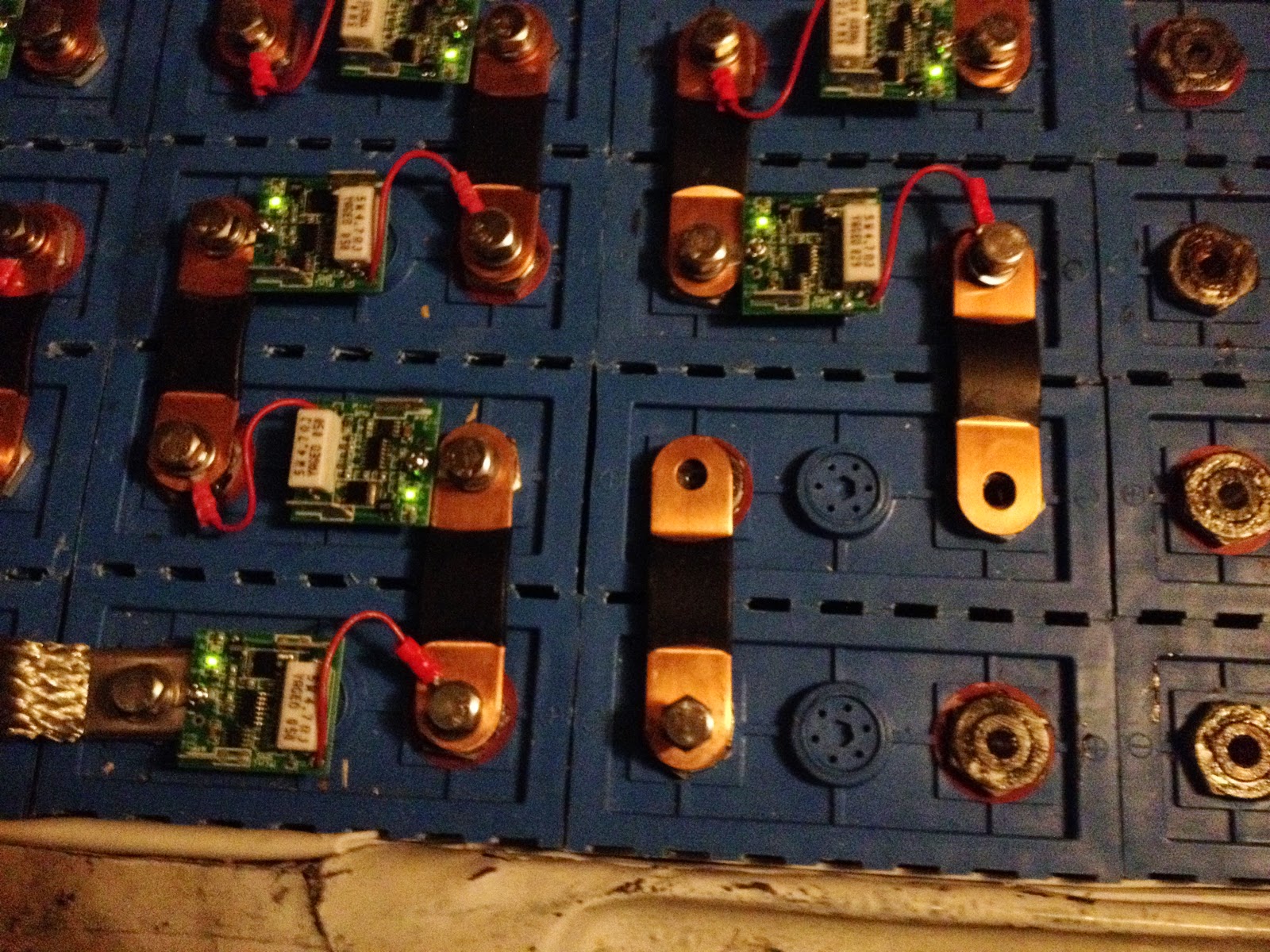With the cells interconnected and the BMS modules installed, the critical final step before energizing the whole system is interconnecting the cell loop. Here is the schematic - the interconnects are highlighted in yellow on the diagram:
The PDF of the BMS wiring is here. I had previously built 80-some short interconnects for the tops of the cells. These went on pretty easily. First, the front box:
Next, the upper rear box:
And finally, the lower rear box:
With all the interconnections in place, I did the final torquing of the terminal bolts using my inch-lb torque wrench (9 N*M or roughly 80 inch-lbs per the specs):
You'll note it is largely wrapped in electrical tape - safety first! Finally, I hooked up the previously-installed inter-battery-box cabling and plugged the charger in - and it made it safely to its first charge:
So, with wheels turning and charger functioning - it is a car! Up next - a test drive.
The PDF of the BMS wiring is here. I had previously built 80-some short interconnects for the tops of the cells. These went on pretty easily. First, the front box:
Next, the upper rear box:
And finally, the lower rear box:
With all the interconnections in place, I did the final torquing of the terminal bolts using my inch-lb torque wrench (9 N*M or roughly 80 inch-lbs per the specs):
You'll note it is largely wrapped in electrical tape - safety first! Finally, I hooked up the previously-installed inter-battery-box cabling and plugged the charger in - and it made it safely to its first charge:
So, with wheels turning and charger functioning - it is a car! Up next - a test drive.




















































